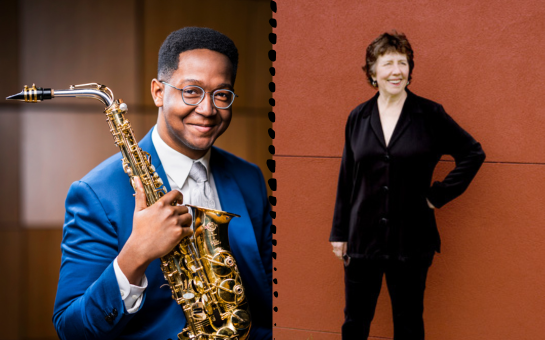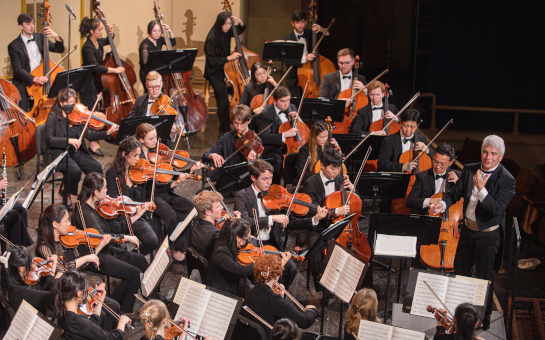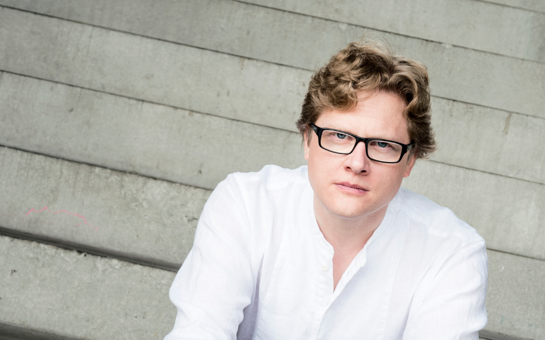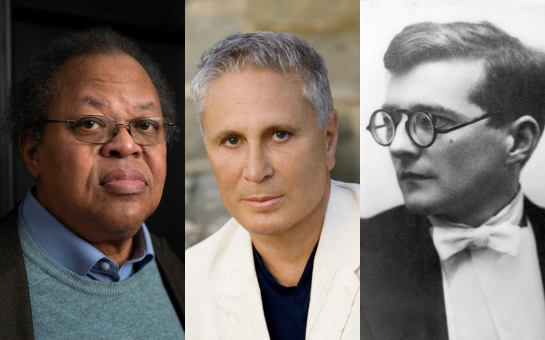Joan Tower’s music is remarkable in its foundational reference to the physical: physical space, physical objects, the physicality and athletic energy of performance. - Robert Kirzinger
BMOP/sound's new release features four works for soloist and by American composer Joan Tower, including Piano Concerto (Homage to Beethoven), the first recordings with string orchestra of Rising and Red Maple, and her Flute Concerto. The album highlights Gil Rose and the Boston Modern Orchestra Project as well as soloists Marc-André Hamelin on piano, Adrian Morejon on bassoon, and Carol Wincenc on flute.
On her latest album, the composer writes: "Unlike composing for orchestra alone, the presence of a soloist creates a different focus that brings the soloist forward as an equal partner in the music. The soloist hopefully remains front and center within the music and is heard clearly and not overwhelmed by the orchestra—either in the power of the sound or in the amount of time it is given to “speak”...For example, Red Maple, the bassoon concerto on this recording, is only accompanied by strings because I felt that, even though there is a beautiful singing quality to this low instrument, it does not have a lot of power and I wanted to keep it “up front” and primary within the setting of the strings. I was also using “velvet gloves” in my first venture featuring this wonderfully expressive instrument.
"On the other hand, the flute can be quite powerful—particularly in the upper registers—even with a full orchestra present. But the lower register does not project with such strength. So in my Flute Concerto, this beautifully rich low register only appears in the opening solo and in a later solo when the orchestra is not present. In contrast, the last third of the piece, which is high, loud and fast, brings the orchestra out full tilt with alternating and competing passages with the flute. In Rising, I had to also be careful to keep the violins and flute out of the same register and to not have too much of a “top heavy” sound with those three high instruments.
"Because the piano has the same big register as the orchestra and is able to create the same textures, speed of notes, articulations, dynamics, and pretty much do everything an orchestra can do, it’s almost like having a second orchestra present. The big differences, however, are that the orchestra can move around many different timbres and also has much more power than the piano. So even here, I had to be aware of those two differences and still manage to keep the piano being heard with a clear voice. The minute I started the Piano Concerto, Beethoven walked in the room. I asked him politely to leave—which he refused to do. I had played a lot of Beethoven’s music (sonatas, chamber music, and even two concertos) and I can now, in my old age, freely admit that he had a huge influence on me in terms of how to try to create and motivate a strong dramatic structure. HIs sense of timing, focused alternating ideas, balancing of local rhythms, textures, and registers (plus occasional big-time risks), are really extraordinary. I owe him a lot. Since he wouldn’t leave the room, I finally relented and included fragments from three of his sonatas—two of which are inside the two cadenzas, to create a kind of homage to Beethoven in a framed 'dream.'
"I want to thank Marc, Carol and Adrian for offering their wonderful and special talents to this recording. Also, many thanks to Gil and BMOP for continuing to support living composers so strongly."
Homage to Beethoven is available for physical pre-order via BMOP/sound. For more information, please contact your local Wise Music Promotion Team. See Contact Us.





